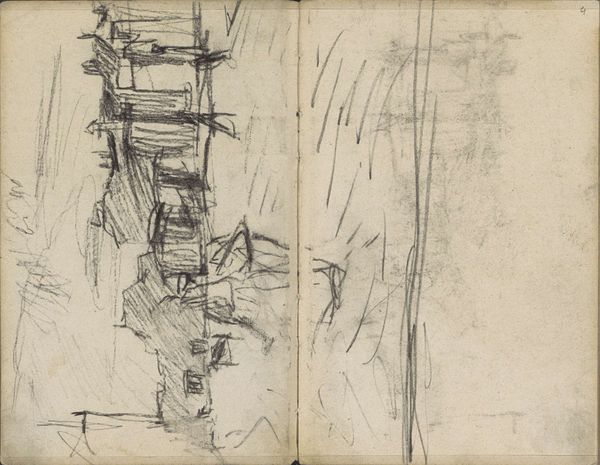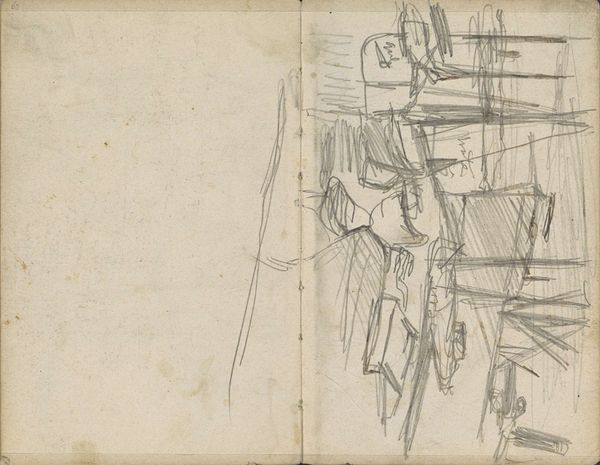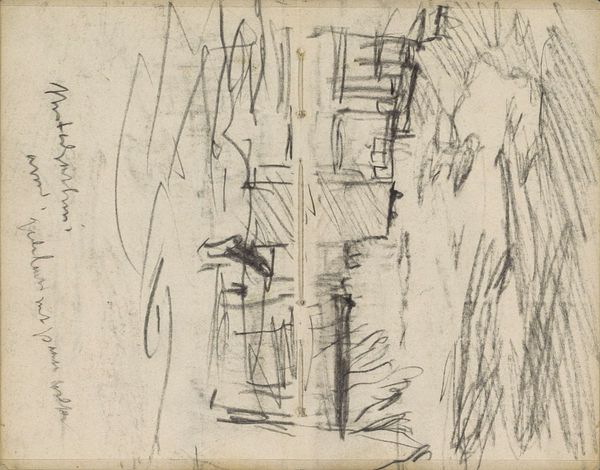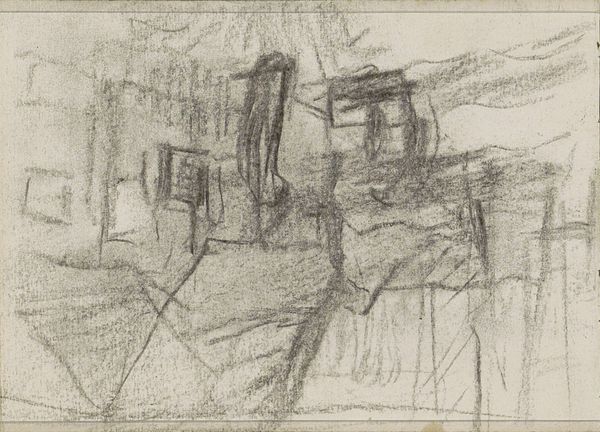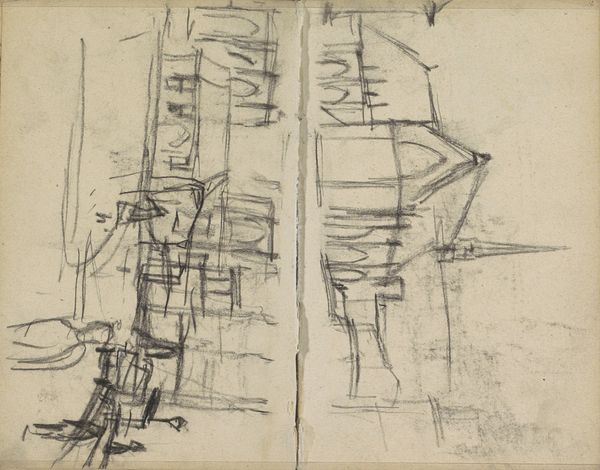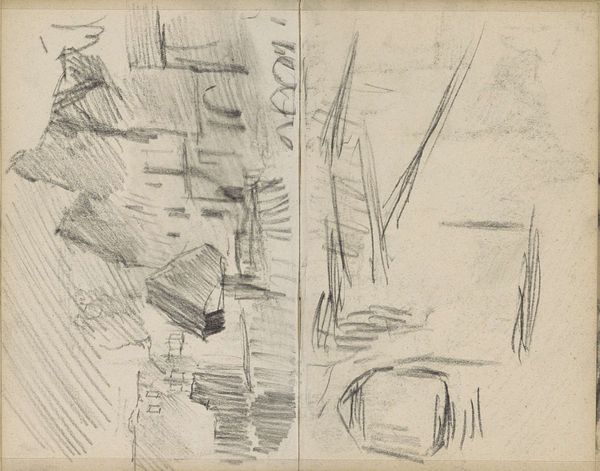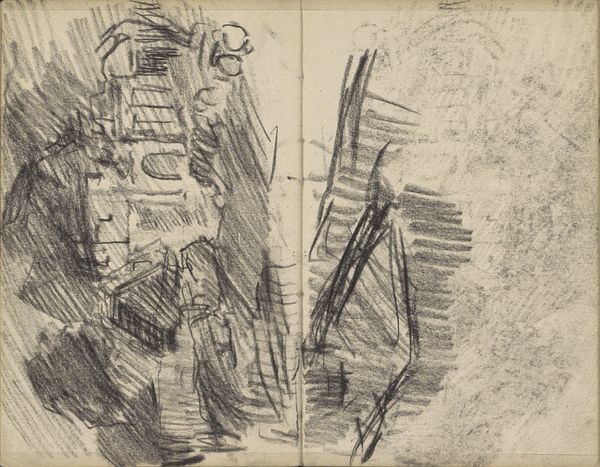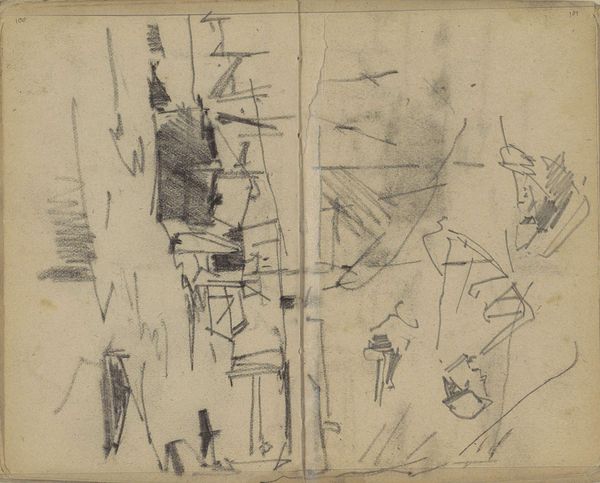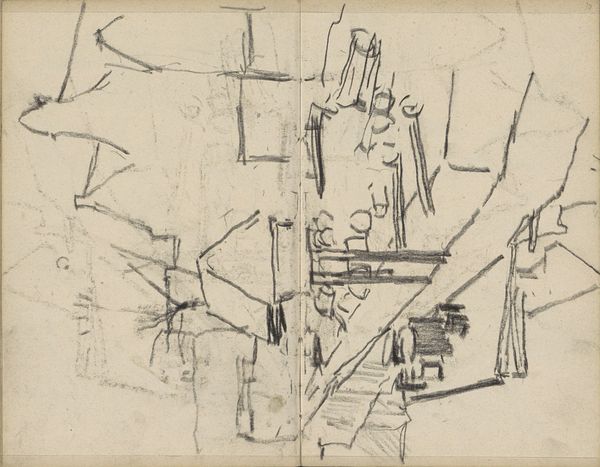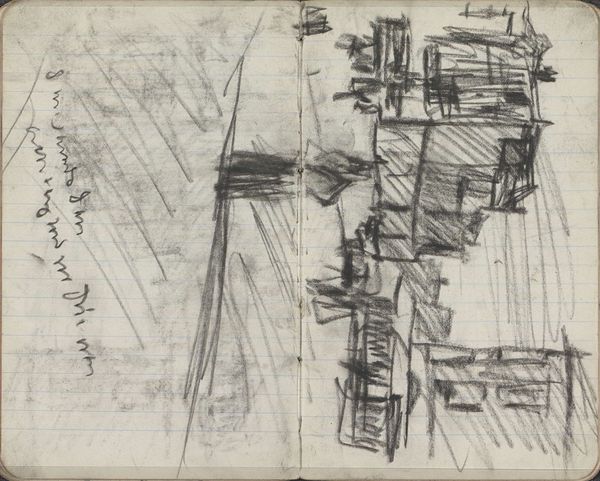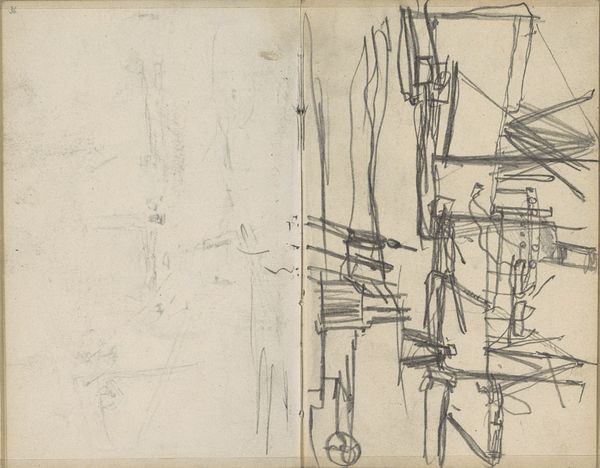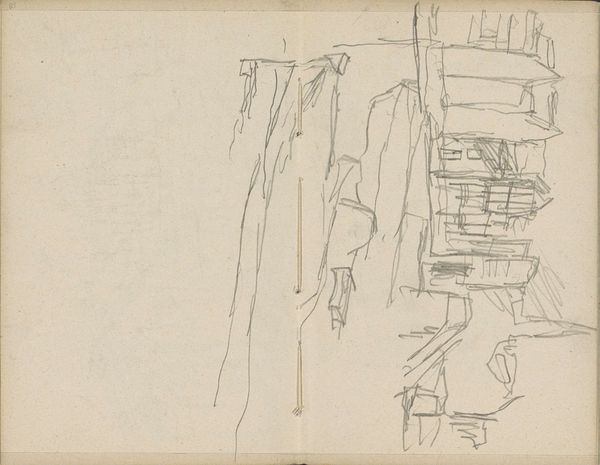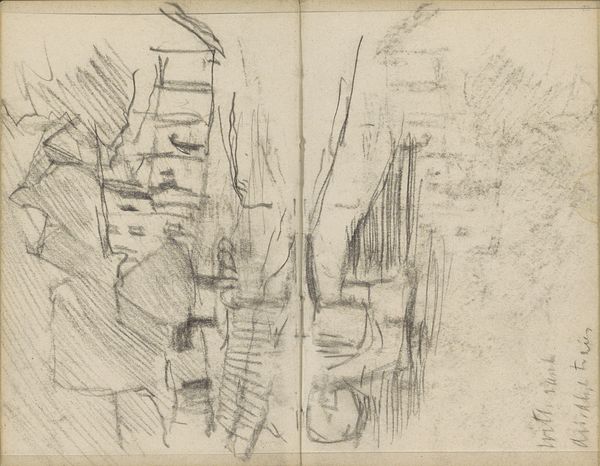
Damrak te Amsterdam, gezien vanaf de Nieuwe Brug c. 1900 - 1901
0:00
0:00
georgehendrikbreitner
Rijksmuseum
Copyright: Rijks Museum: Open Domain
This sketch, "Damrak in Amsterdam, Seen from the Nieuwe Brug," by George Hendrik Breitner, presents a fleeting glimpse of urban life. The bridge, suggested by hasty, angular lines, anchors our view of the bustling Damrak. Observe the figures. Though merely hinted at, they evoke the archetype of the urban wanderer, a figure seen in countless iterations throughout art history. Consider the 'flâneur' of Baudelaire's Paris, a detached observer wandering the city streets, mirroring the observer's role. The bridge itself, a recurring motif across cultures, serves not only as a physical connector but also as a symbolic link between worlds. From ancient Roman aqueducts to contemporary art, the bridge symbolizes transition, passage, and connection. The sketch's unfinished nature, with its sparse lines, invites us to complete the scene ourselves, engaging our memory and imagination. Just as a dream image resonates with personal significance, this sketch taps into our collective memory of the modern city.
Comments
No comments
Be the first to comment and join the conversation on the ultimate creative platform.
